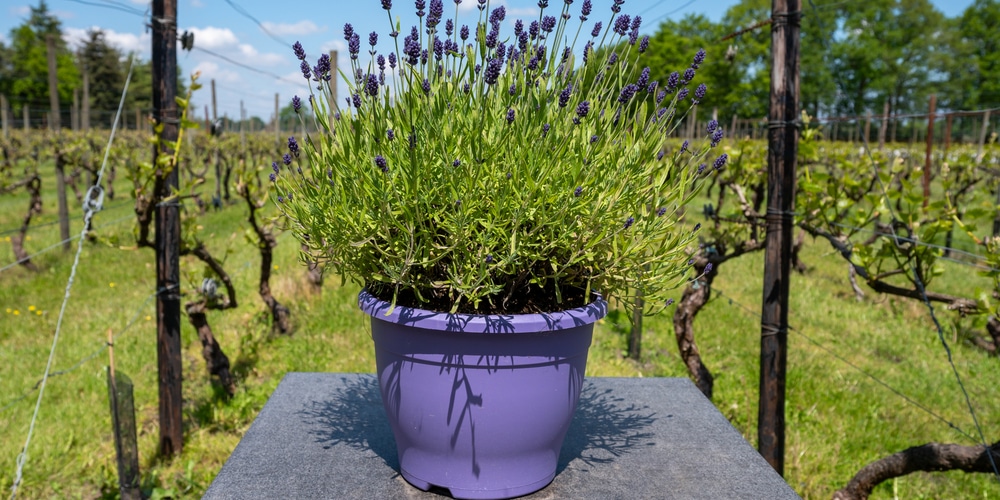Lavender is one of the most popular garden plants worldwide. It’s used in tea, cosmetics, and as a decorative plant. Moreover, the plant is known for its calming scent and pretty purple flowers.
Lavender is a perennial shrub, meaning it will come back year after year. It’s also relatively easy to propagate or grow new plants from cuttings. So, if you’re interested in growing lavender from cuttings, read on to learn more about the process!
How Long Does It Take to Grow Lavender from Cuttings?
It usually takes about 3-6 weeks for lavender cuttings to take roots and grow into new plants. However, this can vary depending on the conditions (temperature, humidity, etc.) in which the cuttings are grown.
To encourage faster growth and higher success rates, you should use fresh, healthy lavender cuttings that are about 4-6 inches long. The ideal time to take cuttings is in the spring or summer, when the plants are actively growing.
How to Grow Lavender from Cuttings
Here is a systematic guide to growing lavender from cuttings:
#1. Fill a planting container with a well-draining potting mix or make your own by mixing 30% coarse sand or gravel with 70% organic matter. Add a tablespoon of garden lime to the mix to raise the pH so that it’s slightly alkaline.
#2. Water the potting mix well and allow it to drain before taking your cuttings.
#3. Look for a stem that has both new and old growth.
#4. Cut about 4-6 inches from the tip of the stem at a 45-degree angle using a sharp knife or pruning shears.
#5. Remove the bottom leaves from the cutting so that only the top 2-3 sets of leaves remain.
#6. Dip the cut end of the stem in rooting hormone powder or gel.
#7. Plant the cutting in the prepared potting mix. Gently firm the soil around the base of the cutting.
#8. Water well and place the pot in a bright, warm location out of direct sunlight.
#9. Keep the soil moist but not soggy while the plant is establishing itself. You can check the moisture level by sticking your finger in the soil. If it feels dry, give it a good watering.
#10. Once the plant is established, you can reduce watering to once a week.
Useful Tips:
- Avoid using cuttings from a lavender plant that’s too young and instead go for the mature one.
- Avoid stems that have already flowered and look for the ones that have leaves on them.
- If you don’t have access to a mature lavender plant, you can purchase one from a nursery.
Protecting and Nourishing the Plants
- Lavender plants are susceptible to root rot, so ensure the potting mix is well draining.
- It’s also important to water the plants at the base of the stem instead of from above to avoid getting water on the leaves.
- Over-watering can lead to fungal diseases; therefore, you should let the soil dry out in between watering.
- Fertilize the plants every few weeks with a balanced liquid fertilizer or use a slow-release fertilizer at the beginning of the growing season.
Pruning:
Lavender plants need to be pruned regularly to promote new growth and prevent the plant from getting too big.
You can prune the plants in the spring or summer after they’ve finished blooming.
- To prune, cut back the main stem by about one-third.
- Remove any dead or dying leaves and branches.
- You can also cut back the side stems to promote new growth.
- If you want to keep the plant more compact, you can prune it more frequently.
Harvesting:
- Lavender flowers can be harvested for fragrance, culinary uses, or dried floral arrangements.
- The best time to harvest the flowers is in the morning after the dew has evaporated.
- Use sharp scissors or pruning shears to cut the stems about 1-2 inches below the flower heads.
- After harvesting, it’s crucial to remove the lower leaves so that only the top 2-3 sets of leaves remain.
- If you’re not going to use the flowers right away, you can store them in a vase of water or wrap them in a damp paper towel and store them in the fridge.
- You can also dry the flowers for later use. Hang the stems upside down in a cool, dark, and dry place.
- The flowers will be ready to use in about 2-3 weeks.
Various Uses for Lavender
Lavender has a wide range of uses, including:
Fragrance: Lavender oil is one of the most popular essential oils used in different products, including perfumes, soaps, candles, and potpourri.
Culinary: Lavender can be used to add flavor to baked goods, desserts, and savory dishes. It’s also used to make lavender sugar and lavender salt.
Dried floral arrangements: Lavender flowers can be dried and used in various arrangements to liven up homes.
Aromatherapy: Lavender oil is used in aromatherapy products and has relaxation properties.
Skin care: Lavender oil is incorporated in various skin care products, including soaps, lotions, and oils. It’s said to have healing properties and can be used to treat acne, eczema, and other skin conditions.
How long does it take to grow lavender from cuttings: Final thoughts
Lavender is easy to grow and care for, and they offer a wide range of uses. Therefore, if you’re looking for a plant that is both beautiful and versatile, lavender is a great option.
Related Article: Can Lavender Grow in Clay Soil?

